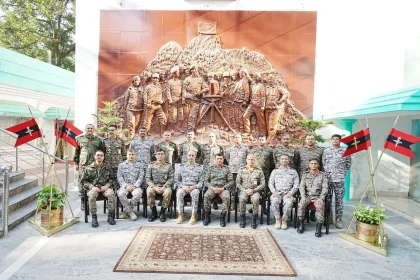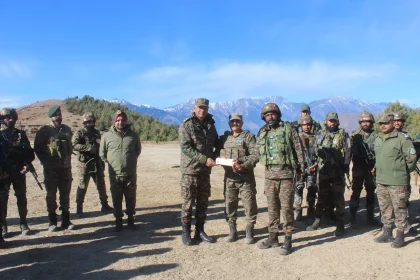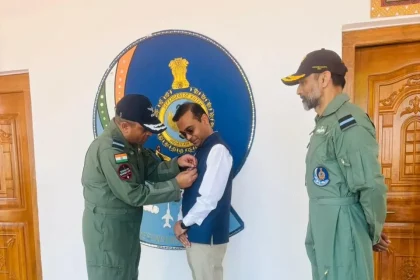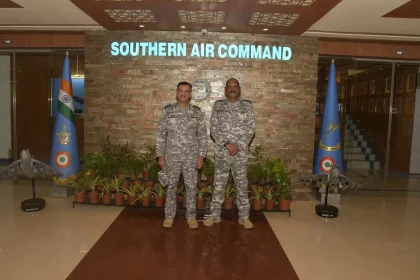Army–Air Force Conduct Bi-Annual BAJAAL Conference in Udhampur to Strengthen Joint Logistics
Key Focus on Synergy, Interoperability and Optimised Air Maintenance for Forward Areas.
Lt Gen Prasanna Kishore Mishra Reviews Anti-Terror Operations in Hinterland, Calls for Heightened Vigilance
Army Reiterates Firm Stand Against Terrorism During High-Level Field Review.
Major Rajprasad RS Develops India’s First In-House Multi-Utility UGV “Sapperscout Ver 2.0”
New Multi-Utility UGV Showcases Soldier-Led Innovation and Operational Autonomy.
Air Marshal Nagesh Kapoor Honours Kutch Collector Anand Patel for Pivotal Role in Operation Sindoor
SWAC Chief Awards Kutch Collector for Key Civil–Military Coordination in Operation Sindoor.
Air Marshal Jeetendra Mishra Reviews Ops Synergy During Visit to Southern Air Command
Commanders Discuss Sindoor Takeaways, Joint Preparedness & Maritime Vigilance.
BlackRock’s Bitcoin Holdings Surge Over 250%, XRP ETF Investors See Simultaneous Wealth Surge After Choosing Moon Hash
Amidst the global crypto asset market's overall surge, fund flows from both institutional and retail investors are exhibiting unprecedented strength.…






